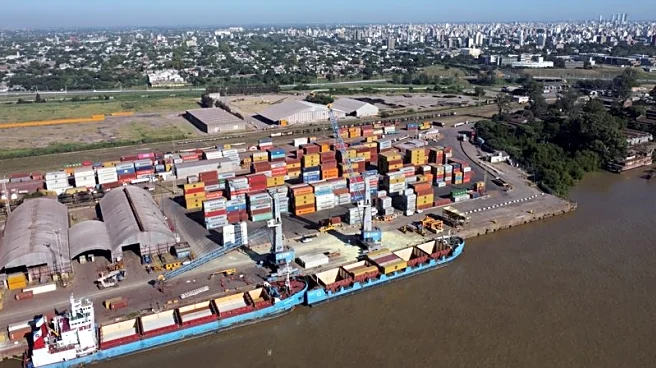What's Happening?
IHS Brazil has signed a new agreement with TIM S.A. to build up to 3,000 communications sites across Brazil. This partnership, which began in 2020, aims to enhance connectivity in multiple regions by deploying innovative communications infrastructure. The initial phase will see a minimum deployment of 500 sites. IHS Brazil, part of the IHS Towers group, plans to leverage this partnership to continue delivering advanced infrastructure solutions. In 2021, IHS Towers acquired a 51% stake in FiberCo Solucoes de Infraestrutura from TIM Brasil, rebranding it as I-Systems, which controls TIM's secondary network infrastructure.
Why It's Important?
The expansion of communications infrastructure in Brazil is crucial for improving connectivity and supporting the country's digital transformation. This partnership between IHS Brazil and TIM S.A. is expected to enhance telecommunications services, benefiting consumers and businesses alike. The deployment of new sites will facilitate better network coverage and capacity, which is essential for supporting emerging technologies such as 5G and IoT. This development is significant for the telecommunications industry, as it represents a strategic investment in infrastructure that can drive economic growth and innovation.
What's Next?
The partnership will likely lead to further collaborations between IHS Brazil and TIM S.A. to expand their infrastructure projects. As the deployment progresses, both companies may explore additional opportunities to enhance connectivity and support Brazil's growing demand for advanced telecommunications services. This could involve investments in new technologies and partnerships with other stakeholders in the industry.
Beyond the Headlines
The expansion of communications infrastructure in Brazil has broader implications for the country's economic development and digital inclusion. Improved connectivity can facilitate access to information, education, and services, contributing to social and economic empowerment. This development may also influence regulatory policies and investment strategies in the telecommunications sector.











